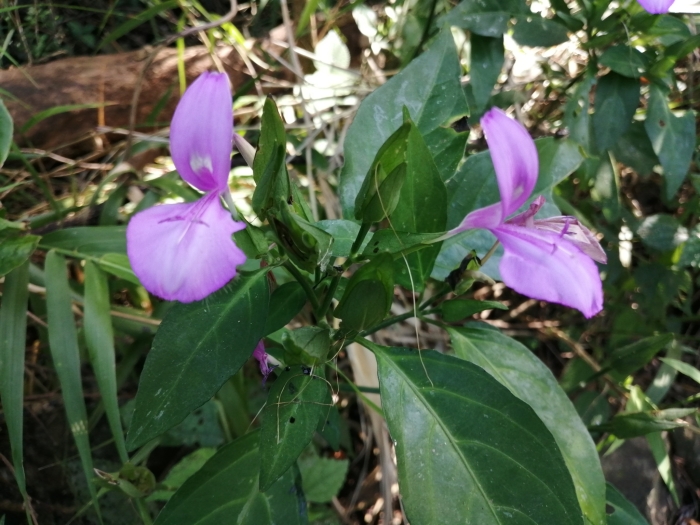Magenta Plant
(Dicliptera tinctoria)
Magenta Plant (Dicliptera tinctoria)
/
/

五色鳥
CC BY 4.0
Image By:
五色鳥
Recorded By:
Copyright:
CC BY 4.0
Copyright Notice:
Photo by: 五色鳥 | License Type: CC BY 4.0 | License URL: http://creativecommons.org/licenses/by/4.0/ | Rights Holder: 五色鳥 | Publisher: iNaturalist | Date Created: 2021-11-01T10:08:24-07:00 |

























Estimated Native Range
Summary
Dicliptera tinctoria, commonly known as Magenta Plant or Lá Cẩm in Vietnamese, is an herbaceous perennial native to a range of habitats including forest margins, open woodlands, and grasslands in Southeast Asia. This includes regions from Assam to Sri Lanka and east to mainland Southeast Asia, Java, southern China, and Taiwan. It typically grows 0.3 to 3.3 feet tall and features lanceolate to ovoid-acute leaves. The plant produces magenta to reddish-violet flowers, which are small but vibrant, and bloom in clusters throughout the growing season, adding a splash of color to the garden.
Dicliptera tinctoria is valued for its striking flower color and its traditional use as a natural dye. The leaves are particularly sought after in Vietnamese cuisine for coloring foods such as bánh da lợn and xôi lá cẩm. In addition to its culinary uses, it is employed in traditional Chinese medicine to treat various ailments. Gardeners appreciate this plant for its low maintenance requirements and its ability to thrive in a variety of soil types, though it prefers well-drained soil and partial to full sun exposure. While not commonly used in Western horticulture, it can serve as an attractive addition to tropical and subtropical gardens, or as a potted plant in temperate regions. It is relatively drought-tolerant once established but benefits from regular watering during prolonged dry periods. Potential problems include susceptibility to spider mites and aphids under stress conditions.CC BY-SA 4.0
Dicliptera tinctoria is valued for its striking flower color and its traditional use as a natural dye. The leaves are particularly sought after in Vietnamese cuisine for coloring foods such as bánh da lợn and xôi lá cẩm. In addition to its culinary uses, it is employed in traditional Chinese medicine to treat various ailments. Gardeners appreciate this plant for its low maintenance requirements and its ability to thrive in a variety of soil types, though it prefers well-drained soil and partial to full sun exposure. While not commonly used in Western horticulture, it can serve as an attractive addition to tropical and subtropical gardens, or as a potted plant in temperate regions. It is relatively drought-tolerant once established but benefits from regular watering during prolonged dry periods. Potential problems include susceptibility to spider mites and aphids under stress conditions.CC BY-SA 4.0
Plant Description
- Plant Type: Herb
- Height: 1.5-2.5 feet
- Width: 1.5-2 feet
- Growth Rate: Moderate
- Flower Color: Orange, Red
- Flowering Season: Summer
- Leaf Retention: Deciduous
Growth Requirements
- Sun: Full Sun
- Water: Low
- Drainage: Fast
Common Uses
Bird Garden, Butterfly Garden, Drought Tolerant, Hummingbird Garden, Low Maintenance
Natural Habitat
Forest margins, open woodlands, and grasslands in Southeast Asia
Other Names
Common Names: Dyer’s Dicliptera
Scientific Names: , Dicliptera tinctoria, Adeloda integra, Dicliptera babui, Dicliptera bivalvis, Dicliptera sivarajanii, Justicia baphica, Justicia bivalvis, Justicia purpurea, Justicia roxburghiana
GBIF Accepted Name: